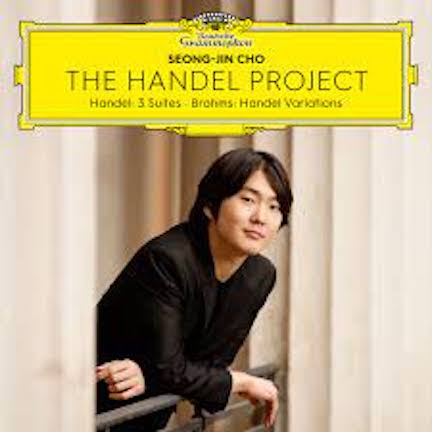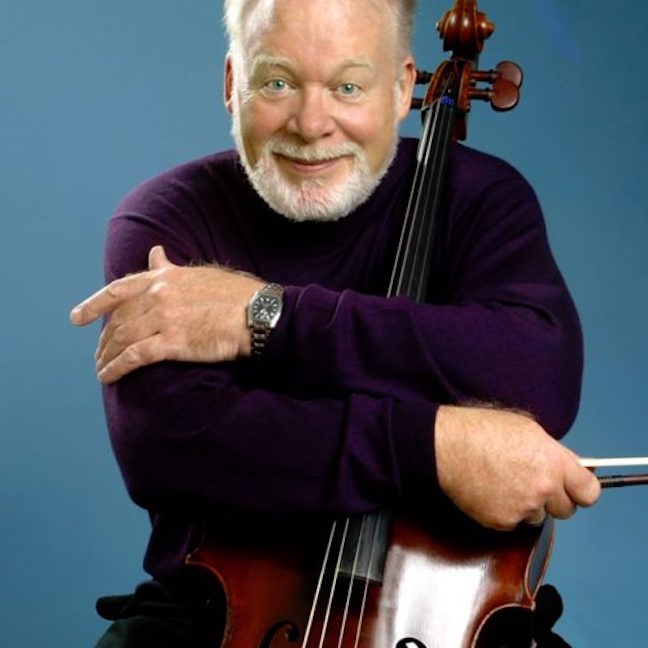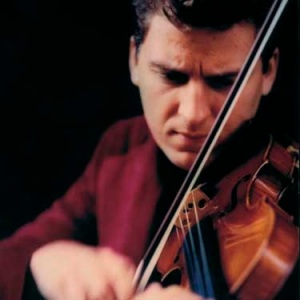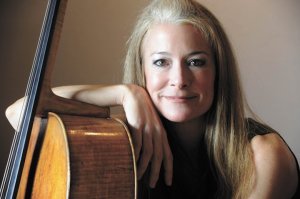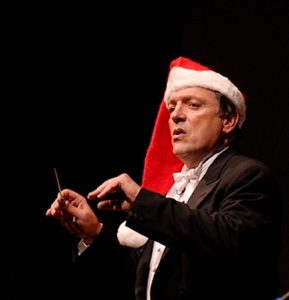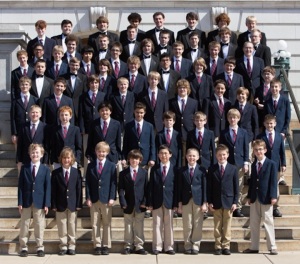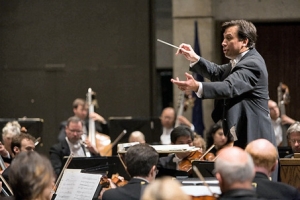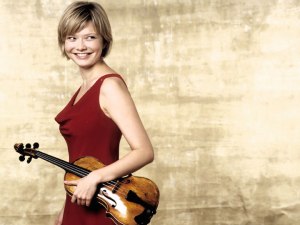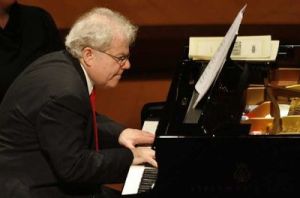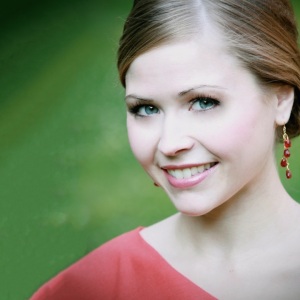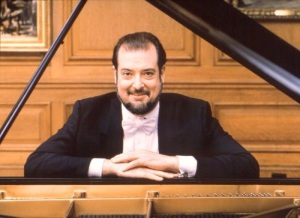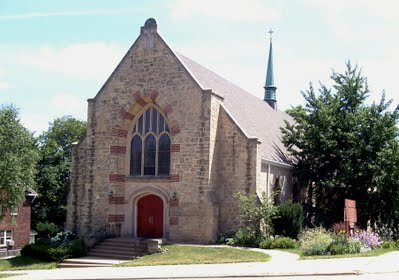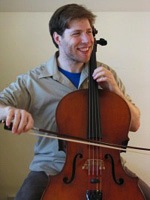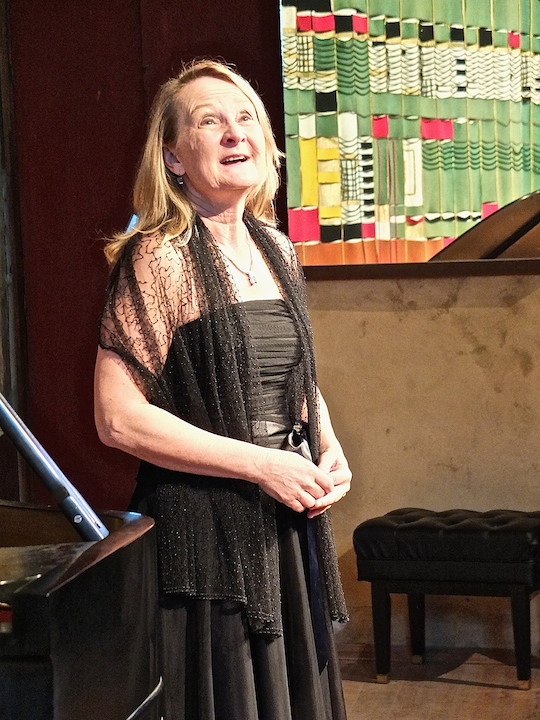The Well-Tempered Ear
Gramophone Magazine names the Best Albums of 2023 so far
2 Comments
PLEASE HELP THE EAR. IF YOU LIKE A CERTAIN BLOG POST, SPREAD THE WORD. FORWARD A LINK TO IT OR, SHARE IT or TAG IT (not just “Like” it) ON FACEBOOK. Performers can use the extra exposure to draw potential audience members to an event. And you might even attract new readers and subscribers to the blog.
By Jacob Stockinger
Gramophone Magazine, in the U.K, has named the best classical albums so far in 2023.
The Ear has only listened to a few of them. But so far he agrees with the choices. He too loves “The Handel Project” (below) — a solo piano recital with works by Handel and Brahms — by South Korean pianist Seong-Jo Cho, who won the Chopin Competition in 2015 and has released many noteworthy albums for Deutsche Grammophon since then. They include works by Chopin, Debussy, Mozart, Schubert, Berg and Liszt.
One does wonder if the British magazine tends to favor British composers and British record labels.
But you can decide for yourself.
One of the advantages of a streaming service — The Ear uses Apple Music and Apple Music Classical — is that once you pay your monthly fee, you have unlimited listening available. You can sample lots of these new — and often unusual — releases without having to buy them. Many are also featured on YouTube.
In addition, the story and capsule reviews have links to the full Gramophone reviews, which has background about some of the rarely recorded or performed composers.
Here are the honorees:
Do you have new recordings to recommend?
Do you have opinions, positive or negative, about the titles and artists that have been named by Gramophone?
The Ear wants to hear.
Tags: #BlogPost, #BlogPosting, #FacebookPost, #FacebookPosting, #YouTubevideo, 2023, Album, András Schiff, Apple, Apple Music, Apple Music Classical, Arts, Bach, background, Baroque, Beethoven, Benjamin Grosvenor, best, blog, Brahms, Britain, British, Britten, Bruch, Bruckner, CD, Cello, Chamber music, Chopin, Chopin International Piano Competition, choral music, Classical music, composer, Concert, concerto, critic, Debussy, Early music, England, Facebook, favor, fee, Firebird, Florence Price, full, Gramophone, Handel, Isabelle Faust, Jacob Stockinger, Johann Sebastian Bach, Kapustin, Korean, Labeque, link, Liszt, Ludwig van Beethoven, magazine, monthly, Mozart, Music, negative, opera, Orchestra, Piano, positive, Rachmaninoff, Rachmaninov, Rafael Payare, Rafal Blechacz, Ravel, recording, review, Rite of Spring, Saint-Saens, Schubert, Seong-Jin Cho, share, singer, Sonata, story, Stravinsky, streaming, strong quartet, symphony, tag, Tchaikovsky, The Ear, U.K., UK, United States, unusual, Vaughn Williams, Viola, Violin, violinist, vocal music, Website, Wisconsin, Wolfgang Amadeus Mozart, women, women composers, Yannick Nézet-Séguin, YouTube
Classical music: As superstar Itzhak Perlman turns 75, a critic assesses his virtues and shortcomings in playing both the violin and his audiences
Leave a Comment
PLEASE HELP THE EAR. IF YOU LIKE A CERTAIN BLOG POST, SPREAD THE WORD. FORWARD A LINK TO IT OR, SHARE IT or TAG IT (not just “Like” it) ON FACEBOOK. Performers can use the extra exposure to draw potential audience members to an event. And you might even attract new readers and subscribers to the blog.
By Jacob Stockinger
Last Monday, Aug. 31, superstar violin virtuoso Itzhak Perlman (below, in a photo by Yael Malka of The New York Times) turned 75.
To celebrate, Sony Classical released a boxed set of 18 CDs (below) with many performances by Perlman – solo, chamber music and concertos – recorded over many years.
On the occasion of Perlman’s birthday, critic Corinna da Fonseca-Wollheim of The New York Times wrote a retrospective review of Perlman’s long career. (You can hear his most popular performance ever — with more than 6 million hits — in the YouTube video at the bottom.)
The Ear finds the opinion piece both brave and truthful, pointing out Perlman’s mastery of the Romantic repertory but also criticizing his stodgy treatment of Vivaldi and other Baroque music that has benefitted from the period-instrument movement and historically informed performance practices
Yet the essay, which also touches on ups and down of Perlman’s career, always remains respectful and appreciative even when discussing Perlman’s shortcomings.
Offering many historical details and photos as well as sample videos, the critical assessment of Perlman seems perfectly timed.
The Ear hopes you enjoy it as much as he did. Here is a link: https://www.nytimes.com/2020/08/26/arts/music/itzhak-perlman-violin.html
If you have heard Itzhak Perlman either on recordings or live – at the Wisconsin Union Theater, the old Civic Center or Overture Hall — let us know what you think.
The Ear wants to hear.
Tags: #AntonioVivaldi, #BaroqueMusic, #BlogPost, #BlogPosting, #BostonSymphony, #BoxSet, #ChamberMusic, #CivicCenter, #ClassicalRecording, #CompactDisc, #ConcertPianist, #CorinnadaFonseca-Wollheim, #DanceMovement, #DisabilityRights, #DorothyDeLay, #EricLeinsdorf, #FacebookPost, #FacebookPosting, #FelixMendelssohn, #FilmScore, #FourSeasons, #HistoricallyInformedPerformancePractices, #IsraeliMusician, #ItzhakPerlman, #JacobStockinger, #JeanSibelius, #Jewishmusician, #JohannesBrahms, #JohannSebastianBach, #JohnWilliams, #JuilliardSchool, #KlezmerMusic, #LudwigVanBeethoven, #MauriceRavel, #MaxBruch, #MovieMusic, #MusicCritic, #MusicEducation, #NewYorkTimes, #NiccoloPaganini, #OvertureCenter, #PablodeSarasate, #PeriodInstrument, #PeterIlyichTchaikovsky, #PeterTchaikovsky, #RobertSchumann, #RomanticMusic, #Schindler'sList, #SergeiProkofiev, #SesameStreet, #SonyClassical, #StevenSpielberg, #TheEar, #TheHolocaust, #TheViolin, #ViolinConcerto, #ViolinistVirtuoso, #VirtuosoViolinist, #VladimirAshkenazy, #WisconsinUnionTheater, #WolfgangAmadeusMozart, #Yo-YoMa, #YouTubevideo, 75, acrobatic, Antonio Vivaldi, appreciative, Arts, assessment, audience, audiences, Audio, Bach, Baroque, Baroque music, Beethoven, benefit, birthday, blog, Boston Symphony Orchestra, bow, Box set, Brahms, brave, Bruch, career, CDs, celebrate, cellist, Cello, Chamber music, charm, Classical music, classicalmusic, communicate, Compact Disc, Concert, concerto, Corinna da Fonseca-Wollheim, critical, de Sarasate, details, disability, disability right, disability rights, disappointment, discuss, Dorothy DeLay, downs, Early music, enjoy, Eric Leinsdorf, ever, Facebook, fans, Felix Mendelssohn, Film score, forward, Four Seasons, hear, historical, historically informed performance practices, hit, Holocaust, hope, intonation, Israel, Itzhak Perlman, Jacob Stockinger, Jean Sibelius, Jewish, Johann Sebastian Bach, Johannes Brahms, John Williams, Juilliard School, Juilliard School of Music, klezmer, legend, like, link, long, Ludwig van Beethoven, Madison, Master, mastery, Maurice Ravel, Max Bruch, Mendelssohn, million, movement, movie music, Mozart, Music, music critic, Music education, New York City, New York Times, Nicolo Paganini, offer, offering, old, opinion, Orchestra, Overture Center, Overture Center for the Arts, Paganini, PBS, performance, period instruments, Peter Ilyich Tchaikovsky, photo, Pianist, Piano, piece, play, polio, popular, post, posting, Prokofiev, Ravel, recital, recording, remain, repertoire, repertory, respectful, retrospective, review, rights, Robert Schumann, Romantic, Sarasate, Schindler's List, Schumann, self-assurance, Sergei Prokofiev, Sesame Street, share, shortcomings, Sibelius, solo, Sonata, SONY, Sony Classical, Steven Spielberg, Student, superstar, tag, Tchaikovsky, Teacher, Television, The Ear, the violin, tone, truthful, TV, United States, ups, vibrant, video, vigorous, Violin, violinist, virtue, virtuoso, Vivaldi, Vladimir Ashkenazy, Wisconsin, Wisconsin Union Theater, Wolgang Amadeus, Yo-Yo Ma, YouTube
Classical music: Legendary American cellist Lynn Harrell, who performed in Madison, is dead at 76
1 Comment
PLEASE HELP THE EAR. IF YOU LIKE A CERTAIN BLOG POST, SPREAD THE WORD. FORWARD A LINK TO IT OR, SHARE IT or TAG IT (not just “Like” it) ON FACEBOOK. Performers can use the extra exposure to draw potential audience members to an event. And you might even attract new readers and subscribers to the blog.
By Jacob Stockinger
Legendary American cellist Lynn Harrell (below) died Monday at 76.
If his name sounds familiar, it could be because Harrell performed in Madison at least three times – twice with the Madison Symphony Orchestra (2007 and 2011), in concertos by Lalo and Victor Herbert, and a recital with pianist Yefim Bronfman at the Wisconsin Union Theater (1994).
No cause of death has yet been given, but various sources say it was unrelated to COVID-19 or the coronavirus pandemic.
To know more about his remarkable life and impressive career, go to his biography on Wikipedia: https://en.wikipedia.org/wiki/Lynn_Harrell
Colleagues were quick to praise Harrell not only as a master musician – gifted with beautiful tone and sensitive, expressive interpretations — but also as a great teacher and a congenial man who made friends easily. He also cut promotional ads for National Public Radio (NPR) urging members to donate, as he himself did.
Here is an interview he did in 2011 with host Norman Gilliland for Wisconsin Public Radio:
https://www.wpr.org/shows/lynn-harrell
Here is a link to an obituary from The Violin Channel that features quotes from many musicians who admired Harrell:
https://theviolinchannel.com/cellist-lynn-harrell-has-passed-away-died-obituary-rip/
And here are tributes from many of his colleagues for British critic Norman Lebrecht’s blog “Slipped Disc”:
https://slippedisc.com/2020/04/lynn-harrell-tributes-pour-in/
A prodigy who made his Carnegie Hall debut at 17, Harrell, who studied at Juilliard and the Curtis Institute, was renowned internationally. He later taught at the Royal Academy of Music in London.
In 1994 he played a Papal Concert at the Vatican to mark the first commemoration and remembrance of the Holocaust. His performance there of Max Bruch’s “Kol Nidrei” for cello and orchestra can be seen and heard at the bottom in the most popular of Harrell’s many YouTube videos.
Tags: #BlogPost, #BlogPosting, #CarnegieHall, #CelloConcerto, #ChamberMusic, #COVID-19, #CurtisInstitute, #EdouardLalo, #FacebookPost, #FacebookPosting, #GreatBritain, #JacobStockinger, #JuilliardSchool, #KolNidre, #KolNidrei, #LondonEngland, #LynnHarrell, #MadisonSymphonyOrchestra, #MaxBruch, #MusicalInterpretation, #MusicCritic, #NationalPublicRadio, #NormanGilliland, #NormanLebrecht, #OrchestralMusic, #PianoAccompaniment, #PianoAccompanist, #RadioHost, #RoyalAcademyofMusic, #SlippedDisc, #TheEar, #TheHolocausr, #TheHolocaust, #ThePope, #TheVatican, #TheViolinChannel, #VictorHerbert, #Wikipediabiography, #WisconsinUnionTheater, #YefimBronfman, #YouTubevideo, ad, admire, American, Arts, Bach, beautiful, biography, blog, British, Bruch, career, Carnegie Hall, cellist, Cello, Chamber music, channel, Classical music, colleague, Concert, concerto, congenial, coronavirus, critic, Curtis Institute, dead, death, die, donate, Edouard Lalo, England, expressive, Facebook, familiar, friend, friends, great, Great Britain, himself, Holocaust, impressive, interview, Jacob Stockinger, Johann Sebastian Bach, Juilliard School, Kol Nidre, Kol Nidrei, legendary, life, London, Lynn Harrell, Madison, Madison Symphony Orchestra, man, many, Max Bruch, members, Music, Musician, name, National Public Radio, Norman Gilliland, Norman Lebrecht, obituary, Orchestra, orchestral, Overture Center, pandemic, Papal, perform, Pianist, Piano, play, Pope, popular, post, posting, prodigy, promotion, Radio, recital, remarkable, remembrance, Remembrance Day, royal, Royal Academy of Music, sensitive, Slipped Disc, sounds, source, study, symphony, Teacher, The Ear, The Vatican, The Violin Channel, tone, tribute, UK, United States, Victor Herbert, Violin, virus, Wikipedia, Wisconsin, Wisconsin Union Theater, Yefim Bronfman, YouTube
Classical music: On Wednesday at noon, Just Bach turns to C.P.E. Bach. At night, the Middleton Community Orchestra, with soloist Paran Amirinazari, plays the Violin Concerto No. 1 by Bruch plus works by Janacek and Sibelius.
2 Comments
PLEASE HELP THE EAR. IF YOU LIKE A CERTAIN BLOG POST, SPREAD THE WORD. FORWARD A LINK TO IT OR, SHARE IT or TAG IT (not just “Like” it) ON FACEBOOK. Performers can use the extra exposure to draw potential audience members to an event. And you might even attract new readers and subscribers to the blog.
By Jacob Stockinger
This coming Wednesday, Feb. 19, features two noteworthy concerts, one by Just Bach at noon and the other by the Middleton Community Orchestra at 7:30 p.m.
Here are details:
JUST BACH
For this month’s FREE one-hour Just Bach concert (below, in a photo by John W. Barker) on this Wednesday at noon in Luther Memorial Church, 1021 University Avenue, attention will turn from father to son.
The concert features music by Carl Philipp Emanuel Bach (below), the eldest son of Johann Sebastian Bach.
The concert opens with a movement from the Sonata in A Minor, Wq. 70/4, H. 85, performed by organist Mark Brampton Smith.
The program continues with a recently rediscovered Cantata, “Ich bin vergnügt mit meinem Stande” (I Am Content with My Station), featuring bass-baritone Professor Paul Rowe, and the Just Bach period-instrument players led by Kangwon Kim.
Just Bach co-founder and soprano Sarah Brailey (below) will lead the chorale sing-along, a beloved audience-participation feature of these programs.
The program concludes with eight selections from the “Geistliche Oden und Lieder ‘Gellert Lieder’” (Sacred Odes and Songs ‘Gellert Songs’), performed by students of Paul Rowe (below, in a photo by Michael R. Anderson), accompanied by organist Mark Brampton Smith.
This will also be the first concert with a mother and daughter performing, with violinist Leanne League in the Just Bach players, and soprano Cecilia League in the Paul Rowe studio.
Performers are: Sarah Brailey, soprano; Paul Rowe, baritone; Kangwon Kim, violin 1 (below); Leanne League, violin 2; Katrin Talbot, viola; Anton TenWolde, cello; Mark Brampton Smith, organ; Allyson Mills, Cecilia League, Carly Ochoa and Ella Anderson, sopranos; and Jack Innes, Jake Elfner, Nick Schinner and Chase Kozak, baritones.
The concert is free and open to the public, with a goodwill offering collected.
Other Just Bach concerts this spring, all Wednesdays at noon are on: March 25, April 15 and May 20.
MIDDLETON COMMUNITY ORCHESTRA
At 7:30 p.m., the mostly amateur and critically acclaimed Middleton Community Orchestra (below) will perform its winter concert as part of its 10th anniversary season.
The concert takes place in the comfortable and acoustically pleasing Middleton Performing Arts Center (below, in a photo by Brian Ruppert) that is attached to Middleton High School, 2100 Bristol Street.
The program, under conductor-composer Steve Kurr, includes the “Lachian Dances” by Leos Janacek; “Finlandia” by Jean Sibelius; and the Violin Concerto No. 1 in G Minor by Max Bruch with guest soloist Paran Amirinazari (below). (You can hear the finale of the violin concerto, played by Sarah Chang, in the YouTube video at the bottom.)
Tickets are $15 for adults. Students are admitted free.
The box office opens at 6:30 p.m. and auditorium doors open at 7 p.m.
There will be a meet-and-greet reception (below) with the orchestra players and audience members after the concert.
For more information about upcoming concerts, how to join the orchestra and how to support it, call (608) 212-8690 or go to: http://middletoncommunityorchestra.org
Tags: #AmateurMusician, #AntonTenWolde, #BaroqueMusic, #BaroqueViolin, #BlogPost, #BlogPosting, #BoxOffice, #CarlPhilippEmanuelBach, #CelloSonata, #ChamberMusic, #ChoralMusic, #ChristianChurch, #ConcertSeason, #CPEBach, #CriticalAcclaim, #CriticallyAcclaimed, #FacebookPost, #FacebookPosting, #Free-WillOffering, #GermanLanguage, #HighSchool, #JacobStockinger, #JeanSibelius, #JohannSebastianBach, #JohnW.Barker, #JustBach, #KangwonKim, #LeanneLeague, #LeosJanacek, #LutherMemorialChurch, #MarikaFischerHoyt, #MarkBramptonSmith, #MaxBruch, #MeadWitterSchoolofMusic, #Meet-and-Greet, #MiddletonCommunityOrchestra, #MiddletonHighSchool, #MiddletonPerformingArtsCenter, #MusicCritic, #OrchestralMusic, #OrganMusic, #OrganSonata, #ParanAmirinazari, #PaulRowe, #PeriodInstrument, #ReligiousMusic, #SacredMusic, #SarahBrailey, #SarahChang, #SopranoSinger, #SteveKurr, #TheEar, #UniversityofWisconsin-Madison, #ViolinConcerto, #VocalMusic, #YouTubevideo, accompany, acoustics, admit, amateur, anniversary, Anton TenWolde, April, Arts, audience, auditorium, Bach, Baroque, bass-baritone, blog, box office, Bruch, Cantata, Carl Philipp Emanuel Bach, Cello, Chamber music, choral music, Chorale, Christian, church, Classical music, comfortable, community, composer, Concert, concerto, conductor, content, critic, dance, daughter, devotional, Early music, evening, Facebook, father, finale, Finlandia, forward, fre, free will offering, German, God, goodwill, high school, hour, hymn, Jacob Stockinger, Janacek, Jean Sibelius, Johann Sebastian Bach, John W. Barker, Just Bach, Kangwon Kim, Leanne League, Leos Janacek, lieder, like, link, Luther, Luther Memorial Church, Madison, march, Marika Fischer Hoyt, Mark Brampton Smith, Max Bruch, May, Mead Witter School of Music, Middleton Community Orchestra, Middleton High School, Middleton Performing Arts Center, month, Mother, movement, Music, Musician, night, noon, noteworthy, ode, offering, open, Orchestra, orchestral music, organ, organist, Paran Amirinazari, participation, Paul Rowe, period-instrument, players, post, posting, public, reception, religious, religious music, sacred, Sarah Brailey, Sarah Chang, Season, share, Sibelius, sing, sing-along, Singing, Sonata, song, songs, soprano, Spring, station, Steve Kurr, students, studio, support, tag, The Ear, United States, University of Wisconsin-Madison School of Music, University of Wisconsin–Madison, UW-Madison, Viola, Violin, Violin concerto, vocal music, Wednesday, winter, Wisconsin, YouTube
Classical music: Here are classical music winners — and nominees — of the 61st annual Grammy nominations for 2019.
2 Comments
IF YOU LIKE A CERTAIN BLOG POST, PLEASE SPREAD THE WORD. FORWARD A LINK TO IT OR, SHARE or TAG IT (not just “Like” it) ON FACEBOOK. Performers can use the extra exposure to draw potential audience members to an event.
By Jacob Stockinger
This should have come out sooner since the Grammy Awards (below) were given out a week ago. But it has been such a busy week for Iive music in Madison – as will next week be – that this was the first occasion to post them.
In any case, for all their insider shortcomings they are a matter of interest to many, and can be helpful in understanding the contemporary classical scene and new music as you build your own playlists and recording library.
There are some points of interest including the fact that two Grammys were won by Canadian violinist James Ehnes for his performance of the Violin Concerto by the contemporary composer Aaron Jay Kernis.
Ehnes (below) is in town this weekend to play the Violin Concerto by Johannes Brahms with the Madison Symphony Orchestra (the last performance is this afternoon at 2:30 p.m. in Overture Hall. The Ear hopes he might return to perform the Kernis concerto with MSO.
Also, Apollo’s Fire, which won in the Best Solo Vocal category, will perform Baroque music by Johann Sebastian Bach, Antonio Vivaldi and Marco Uccellini at the Wisconsin Union Theater on Saturday, March 30.
Finally and unfortunately, some Madison nominees — including retired UW-Madison flute professor Stephanie Jutt and her co-director of the Bach Dancing and Dynamite Society pianist Jeffrey Sykes — got edged out in the Producer category, as did retired UW professor James P. Leary for his liner notes to “Alpine Dreaming.”
In the orchestra category is John Harbison — who is in town marking his 80th birthday with many events, including the world premiere tonight at the W-Madison of his Sonata for Viola and Piano. In the Chamber Music category, Canadian pianist Marc-André Hamelin will solo in concertos by Maurice Ravel and Richard Strauss with the Madison Symphony Orchestra on April 12-14.
Look at the winners carefully. Clearly, the recording industry is, by and large, skipping over the usual classical masters such as Bach, Beethoven and Brahms to focus instead on living composers and contemporary music or stories relevant to our times, such as the opera by Mason Bates about the late Apple wizard Steve Jobs.
One major exception is the third Grammy in a row for the cycle of symphonies by the famed Russian composer Dmitri Shostakovich being done by the Latvian-born conductor Andris Nelsons and the Boston Symphony Orchestra.
Here are the nominees and winners – the latter marked with an asterisk, a photo and the word WINNER — for the 61st Grammy Awards. Leave a comment with wa you think of the nominees and winners.
- Best Engineered Album, Classical
An Engineer’s Award. (Artist names appear in parentheses.)
BATES: THE (R)EVOLUTION OF STEVE JOBS. Mark Donahue & Dirk Sobotka, engineers; Mark Donahue, mastering engineer (Michael Christie, Garrett Sorenson, Wei Wu, Sasha Cooke, Edwards Parks, Jessica E. Jones & Santa Fe Opera Orchestra)
BEETHOVEN: SYMPHONY NO. 3; STRAUSS: HORN CONCERTO NO. 1
Mark Donahue, engineer; Mark Donahue, mastering engineer (Manfred Honeck & Pittsburgh Symphony Orchestra)
JOHN WILLIAMS AT THE MOVIES. Keith O. Johnson & Sean Royce Martin, engineers; Keith O. Johnson, mastering engineer (Jerry Junkin & Dallas Winds).
LIQUID MELANCHOLY – CLARINET MUSIC OF JAMES M. STEPHENSON
Bill Maylone & Mary Mazurek, engineers; Bill Maylone, mastering engineer (John Bruce Yeh)
*WINNER — SHOSTAKOVICH: SYMPHONIES NOS. 4 & 11. Shawn Murphy & Nick Squire, engineers; Tim Martyn, mastering engineer (Andris Nelsons & Boston Symphony Orchestra)
VISIONS AND VARIATIONS. Tom Caulfield, engineer; Jesse Lewis, mastering engineer (A Far Cry)
- Producer Of The Year, Classical
A Producer’s Award. (Artist names appear in parentheses.)
* WINNER — BLANTON ALSPAUGH (below)
- Arnesen: Infinity – Choral Works (Joel Rinsema & Kantorei)
- Aspects Of America (Carlos Kalmar & Oregon Symphony)
- Chesnokov: Teach Me Thy Statutes (Vladimir Gorbik & PaTRAM Institute Male Choir)
- Gordon, R.: The House Without A Christmas Tree (Bradley Moore, Elisabeth Leone, Maximillian Macias, Megan Mikailovna Samarin, Patricia Schuman, Lauren Snouffer, Heidi Stober, Daniel Belcher, Houston Grand Opera Juvenile Chorus & Houston Grand Opera Orchestra
- Haydn: The Creation (Andrés Orozco-Estrada, Betsy Cook Weber, Houston Symphony & Houston Symphony Chorus)
- Heggie: Great Scott (Patrick Summers, Manuel Palazzo, Mark Hancock, Michael Mayes, Rodell Rosel, Kevin Burdette, Anthony Roth Costanzo, Nathan Gunn, Frederica von Stade, Ailyn Pérez, Joyce DiDonato, Dallas Opera Chorus & Orchestra)
- Music Of Fauré, Buide & Zemlinsky (Trio Séléné)
- Paterson: Three Way – A Trio Of One-Act Operas (Dean Williamson, Daniele Pastin, Courtney Ruckman, Eliza Bonet, Melisa Bonetti, Jordan Rutter, Samuel Levine, Wes Mason, Matthew Treviño & Nashville Opera Orchestra)
- Vaughan Williams: Piano Concerto; Oboe Concerto; Serenade To Music; Flos Campi (Peter Oundjian & Toronto Symphony Orchestra)
DAVID FROST
- Beethoven: Piano Sonatas, Volume 7 (Jonathan Biss)
• Mirror In Mirror (Anne Akiko Meyers, Kristjan Järvi & Philharmonia Orchestra)
• Mozart: Idomeneo (James Levine, Alan Opie, Matthew Polenzani, Alice Coote, Nadine Sierra, Elza van den Heever, The Metropolitan Opera Orchestra & Chorus)
• Presentiment (Orion Weiss)
• Strauss, R.: Der Rosenkavalier (Sebastian Weigle, Renée Fleming, Elīna Garanča, Erin Morley, Günther Groissböck, Metropolitan Opera Orchestra & Chorus)
ELIZABETH OSTROW
- Bates: The (R)evolution Of Steve Jobs (Michael Christie, Garrett Sorenson, Wei Wu, Sasha Cooke, Edwards Parks, Jessica E. Jones & Santa Fe Opera Orchestra)
• The Road Home (Joshua Habermann & Santa Fe Desert Chorale)
JUDITH SHERMAN
- Beethoven Unbound (Llŷr Williams)
• Black Manhattan Volume 3 (Rick Benjamin & Paragon Ragtime Orchestra)
• Bolcom: Piano Music (Various Artists)
• Del Tredici: March To Tonality (Mark Peskanov & Various Artists)
• Love Comes In At The Eye (Timothy Jones, Stephanie Sant’Ambrogio, Jeffrey Sykes, Anthony Ross, Carol Cook, Beth Rapier & Stephanie Jutt)
• Meltzer: Variations On A Summer Day & Piano Quartet (Abigail Fischer, Jayce Ogren & Sequitur)
• Mendelssohn: Complete Works For Cello And Piano (Marcy Rosen & Lydia Artymiw)
• New Music For Violin And Piano (Julie Rosenfeld & Peter Miyamoto)
• Reich: Pulse/Quartet (Colin Currie Group & International Contemporary Ensemble)
DIRK SOBOTKA
- Beethoven: Symphony No. 3; Strauss: Horn Concerto No. 1 (Manfred Honeck & Pittsburgh Symphony Orchestra)
• Lippencott: Frontier Symphony (Jeff Lippencott & Ligonier Festival Orchestra)
• Mahler: Symphony No. 8 (Thierry Fischer, Mormon Tabernacle Choir & Utah Symphony)
• Music Of The Americas (Andrés Orozco-Estrada & Houston Symphony) 
- Best Orchestral Performance Award to the Conductor and to the Orchestra
- BEETHOVEN: SYMPHONY NO. 3; STRAUSS: HORN CONCERTO NO. 1. Manfred Honeck, conductor (Pittsburgh Symphony Orchestra)
- NIELSEN: SYMPHONY NO. 3 & SYMPHONY NO. 4. Thomas Dausgaard, conductor (Seattle Symphony)
- RUGGLES, STUCKY & HARBISON: ORCHESTRAL WORKS. David Alan Miller, conductor (National Orchestral Institute Philharmonic)
- SCHUMANN: SYMPHONIES NOS. 1-4. Michael Tilson Thomas, conductor (San Francisco Symphony)
- * WINNER — SHOSTAKOVICH: SYMPHONIES NOS. 4 & 11 Andris Nelsons, conductor (Boston Symphony Orchestra)
76. Best Opera Recording Award to the Conductor, Album Producer(s) and Principal Soloists.
- ADAMS: DOCTOR ATOMIC. John Adams, conductor; Aubrey Allicock, Julia Bullock, Gerald Finley & Brindley Sherratt; Friedemann Engelbrecht, producer (BBC Symphony Orchestra; BBC Singers)
- * WINNER –BATES: THE (R)EVOLUTION OF STEVE JOBS. Michael Christie, conductor; Sasha Cooke, Jessica E. Jones, Edwards Parks, Garrett Sorenson & Wei Wu; Elizabeth Ostrow, producer (The Santa Fe Opera Orchestra)
- LULLY: ALCESTE. Christophe Rousset, conductor; Edwin Crossley-Mercer, Emiliano Gonzalez Toro & Judith Van Wanroij; Maximilien Ciup, producer (Les Talens Lyriques; Choeur De Chambre De Namur)
- STRAUSS, R.: DER ROSENKAVALIER. Sebastian Weigle, conductor; Renée Fleming, Elīna Garanča, Günther Groissböck & Erin Morley; David Frost, producer (Metropolitan Opera Orchestra; Metropolitan Opera Chorus)
- VERDI: RIGOLETTO. Constantine Orbelian, conductor; Francesco Demuro, Dmitri Hvorostovsky & Nadine Sierra; Vilius Keras & Aleksandra Keriene, producers (Kaunas City Symphony Orchestra; Men Of The Kaunas State Choir)
- Best Choral Performance. Award to the Conductor, and to the Choral Director and/or Chorus Master where applicable and to the Choral Organization/Ensemble.
- CHESNOKOV: TEACH ME THY STATUTES. Vladimir Gorbik, conductor (Mikhail Davydov & Vladimir Krasov; PaTRAM Institute Male Choir)
- KASTALSKY: MEMORY ETERNAL. Steven Fox, conductor (The Clarion Choir)
- * WINNER — MCLOSKEY: ZEALOT CANTICLES. Donald Nally, conductor (Doris Hall-Gulati, Rebecca Harris, Arlen Hlusko, Lorenzo Raval & Mandy Wolman; The Crossing)
- RACHMANINOV: THE BELLS. Mariss Jansons, conductor; Peter Dijkstra, chorus master (Oleg Dolgov, Alexey Markov & Tatiana Pavlovskaya; Symphonieorchester Des Bayerischen Rundfunks; Chor Des Bayerischen Rundfunks)
- Best Chamber Music/Small Ensemble Performance. For new recordings of works with chamber or small ensemble (24 or fewer members, not including the conductor). One Award to the ensemble and one Award to the conductor, if applicable.
- * WINNER — ANDERSON, LAURIE: LANDFALL. Laurie Anderson & Kronos Quartet
- BEETHOVEN, SHOSTAKOVICH & BACH. The Danish String Quartet
- BLUEPRINTING. Aizuri Quartet
- STRAVINSKY: THE RITE OF SPRING CONCERTO FOR TWO PIANOS. Leif Ove Andsnes & Marc-André Hamelin
- Best Classical Instrumental Solo. Award to the Instrumental Soloist(s) and to the Conductor when applicable.
- BARTÓK: PIANO CONCERTO NO. 2. Yuja Wang; Simon Rattle, conductor (Berliner Philharmoniker)
- BIBER: THE MYSTERY SONATAS. Christina Day Martinson; Martin Pearlman, conductor (Boston Baroque)
- BRUCH: SCOTTISH FANTASY, OP. 46; VIOLIN CONCERTO NO. 1 IN G MINOR, OP. 26. Joshua Bell (The Academy Of St. Martin In The Fields)
- GLASS: THREE PIECES IN THE SHAPE OF A SQUARE. Craig Morris
- Best Classical Solo Vocal Album. Award to: Vocalist(s), Collaborative Artist(s) (Ex: pianists, conductors, chamber groups) Producer(s), Recording Engineers/Mixers with 51% or more playing time of new material.
- ARC. Anthony Roth Costanzo; Jonathan Cohen, conductor (Les Violons Du Roy)
- THE HANDEL ALBUM. Philippe Jaroussky; Artaserse, ensemble
- MIRAGES. Sabine Devieilhe; François-Xavier Roth, conductor (Alexandre Tharaud; Marianne Crebassa & Jodie Devos; Les Siècles)
- SCHUBERT: WINTERREISE. Randall Scarlata; Gilbert Kalish, accompanist
- * WINNER — SONGS OF ORPHEUS – MONTEVERDI, CACCINI, D’INDIA & LANDI. Karim Sulayman; Jeannette Sorrell, conductor; Apollo’s Fire, ensembles

- Best Classical Compendium. Award to the Artist(s) and to the Album Producer(s) and Engineer(s) of over 51% playing time of the album, if other than the artist.
- * WINNER — FUCHS: PIANO CONCERTO ‘SPIRITUALIST’; POEMS OF LIFE; GLACIER; RUSH. JoAnn Falletta, conductor; Tim Handley, producer
- GOLD. The King’s Singers; Nigel Short, producer
- THE JOHN ADAMS EDITION. Simon Rattle, conductor; Christoph Franke, producer
- JOHN WILLIAMS AT THE MOVIES. Jerry Junkin, conductor; Donald J. McKinney, producer
- VAUGHAN WILLIAMS: PIANO CONCERTO; OBOE CONCERTO; SERENADE TO MUSIC; FLOS CAMPI. Peter Oundjian, conductor; Blanton Alspaugh, producer

- Best Contemporary Classical Composition. A Composer’s Award. (For a contemporary classical composition composed within the last 25 years, and released for the first time during the Eligibility Year.) Award to the librettist, if applicable.
- BATES: THE (R)EVOLUTION OF STEVE JOBS. Mason Bates, composer; Mark Campbell, librettist (Michael Christie, Garrett Sorenson, Wei Wu, Sasha Cooke, Edwards Parks, Jessica E. Jones & Santa Fe Opera Orchestra)
- DU YUN: AIR GLOW. Du Yun, composer (International Contemporary Ensemble)
- HEGGIE: GREAT SCOTT. Jake Heggie, composer; Terrence McNally, librettist (Patrick Summers, Manuel Palazzo, Mark Hancock, Michael Mayes, Rodell Rosel, Kevin Burdette, Anthony Roth Costanzo, Nathan Gunn, Frederica von Stade, Ailyn Pérez, Joyce DiDonato, Dallas Opera Chorus & Orchestra)
- * WINNER — KERNIS: VIOLIN CONCERTO. Aaron Jay Kernis (below top), composer (James Ehnes, Ludovic Morlot & Seattle Symphony). You can hear the first movement in the YouTube video at the bottom.
- MAZZOLI: VESPERS FOR VIOLIN. Missy Mazzoli, composer (Olivia De Prato)
Tags: #AaronJayKernis, #AcademyofSt.MartinintheFields, #AlbumCover, #AlexanderZemlinsky, #AlpineDreaming", #AndrisNelsons, #AnneAkikoMeyers, #Apollo'sFire, #Applecomputers, #AppleInc., #ArvoPärt, #BachDancingandDynamiteSociety, #BaroqueMusic, #BBCOrchestra, #BBCSymphonyOrchestra, #BelaBartok, #BerlinGermany, #BerlinPhilharmonic, #BlogPost, #BlogPosting, #BostonBaroque, #BostonSymphony, #CarlNielsen, #ChamberMusic, #ChoralMusic, #ClarinetMusic, #ClaudioMonteverdi, #DanishStringQuartet, #DavidDelTedici, #DavidFrost, #DerRosenkavalier, #DmitriHvorostovsky, #DmitriShostakovich, #DoctorAtomic, #DuYun, #FacebookPost, #FacebookPosting, #FacultyMember, #FilmScore, #FlosCampi, #FranzJosephHaydn, #FranzSchubert, #FredericavonStade, #GeorgeFridericHandel, #GiuseppeVerdi, #GrammyAwards, #GrammyNominations, #GustavMahler, #HeinrichBiber, #HornConcerto, #HoustonGrandOpera, #HoustonSymphony, #IgorStravinsky, #JakeHeggie, #JamesEhnes, #JamesM.Stephenson, #JamesP.Leary, #Jean-BaptisteLully, #JeffreySykes, #JohannesBrahms, #JohannSebastianBach, #JohnAdams, #JohnHarbison, #JohnWilliams, #JonathanBiss, #JoshuaBell, #JoyceDiDonato, #JudithSherman, #KennethFuchs, #KronosQuartet, #LaurieAnderson, #LeifOveAndsnes, #LinerNotes, #LiveMusic, #LivingComposers, #LudwigVanBeethoven, #MadisonSymphonyOrchestra, #Marc-AndréHamelin, #MarcoUccellini, #MartinPearlman, #MasonBates, #MauriceRavel, #MaxBruch, #MeadWitterSchoolofMusic, #MetropolitanOpera, #MichaelTilsonThomas, #MissyMazzoli, #MovieMusic, #MovieSoundtrack, #Musicfaculty, #NashvilleTennessee, #NathanGunn, #NewMusic, #OboeConcerto, #OrionWeiss, #OvertureCenter, #OvertureHall, #PavelChesnokov, #PhilipGlass, #PianoConcerto, #PianoSonata, #RalphVaughanWilliams, #RichardStrauss, #RobertSchumann, #SanFrancisco, #SanFranciscoSymphony, #SantaFeOpera, #SeattleSymphony, #SeattleWashington, #SerenadetoMusic, #SergeiRachmaninoff, #SergeiRachmaninov, #SimonRattle, #SteveJobs, #SteveReich, #SteveStucky, #StringQuartet, #TheBells, #TheCreation, #TheCross, #TheEar, #TorontoCanada, #TorontoSymphonyOrchestra, #UWProfessor, #ViolinConcerto, #WilliamBolcom, #WisconsinUnionTheater, #WolfgangAmadeusMozart, #YouTubevideo, #YujaWang, Aaron Jay Kernis, Academy of St Martin in the Fields, Album, Alpine, Alpine Dreaming, America, Andris Nelsons, Anne Akiko Meyers, Apollo's Fire, Apple, Arts, Arvo Part, Bach, Bach ancing, Bach Dancing and Dynamite Society, Baroque, Béla Bartók, BBC, BBC Symphony Orchestra, Beethoven, Berlin, Berlin Philharmonic, Biber, blog, Boston Baroque, Boston Symphony, Boston Symphony Orchestra, Bruch, Caccini, Canada, Carl Nielsen, category, Cello, Chamber music, choral music, clarinet, Classical music, Compact Disc, composer, concerto, conductor, contemporary, Creation, Danish String Quartet, David Del Tredici, David Frost, Der Rosenkavalier, Dmitri Hvorostovsky, Dmitri Shostakovich, Doctor Atomic, dream, dreaming, Du Yun, Early music, engineer, Facebook, faculty, Faure, film, Film score, Flos campi, flute, forward, Francesca Caccini, Franz Schubert, Frederica von Stade, Fuchs, George Frideric Handel, Grammy Awards, Handel, Haydn, horn concerto, Houston Grand Opera, Houston Symphony Orchestra, Idomeneo, Igor Stravinsky, Jacob Stockinger, Jake Heggie, James Ehnes, James M. Stephenson, James P. Leary, Jeffrey Sykes, Johann Sebastian Bach, Johannes Brahms, John Adams, John DeMain, John Harbison, John Williams, Jonathan Biss, Joshua Bell, Joyce DiDonato, Judith Sherman, Kronos Quartet, Laurie Anderson, Leif Ove Andsnes, library, like, liner notes, live music, living composers, Ludwig van Beethoven, Lully, Madison, Madison Symphony Orchestra, Mahler, Marc-André Hamelin, Marco Uccellini, Martin Pearlman, Mason Bates, Mead Witter School of Music, Metropolitan Opera, Michael Tilson Thomas, Missy Mazzoli, Monteverdi, Movies, Mozart, Music, Nashville, Nathan Gunn, New Music, nominations, nominees, notes, oboe concerto, opera, Orchestra, Orion Weiss, Orpheus, Overture Center, Overture Hall, Pavel Chesnokov, Philip Glass, photo, Pianist, Piano, Piano concerto, Piano sonata, playlist, professor, Rachmaninoff, Rachmaninov, Ragtime, Ralph Vaughan Williams, Ravel, recording, relevant, Richard Strauss, Rigoletto, Robert Schumann, San Francisco, San Francisco Symphony, Santa Fe Opera, Schubert, Seattle, Seattle Symphony, Serenade to Music, share, Simon Rattle, Singing, Sonata, song, soundtrack, Steve Jobs, Steve Reich, Steve Stucky, stories, String quartet, symphonies, symphony, tag, The Bells, The Creation, The Cross, The Ear, Toronto, Toronto Symphony Orchestra, United States, University of Wisconsin-Madison School of Music, University of Wisconsin–Madison, variations, Verdi, Viola, Violin, visions, vocal music, weekend, WILLIAM BOLCOM, winner, Winterreise, Wisconsin, Wisconsin Union Theater, Wolfgang Amadeus Mozart, YouTube, Yuja Wang, Zemlinsky
Classical music: Juilliard violin professor Laurie Smukler continues a great season of string playing on Saturday night with a FREE recital at the UW-Madison
1 Comment
By Jacob Stockinger
This is a post about a very appealing FREE concert by Juilliard violinist Laurie Smukler (below) on this Saturday night at 8 p.m. in Mills Hall.
But for The Ear, some context seems fitting.
Some seasons are memorable for great singing or great piano playing or great orchestral playing. And there certainly has been, and will continue to be, lots more of all three this autumn and winter.
But what has really stood out to The Ear this Fall is the string playing, especially the violin.
Actually it started in the summer with a sizzling, white-hot performance by the Bach Dancing and Dynamite Society. The BDDS interspersed Vivaldi’s “Four Seasons” with Astor Piazzolla’s “Four Seasons in Buenos Aires.”
Violinist Suzanne Beia (below top) played the Vivaldi seasons and McGill University violinist Axel Strauss from Montreal (below bottom) played the Piazzolla seasons. The dueling violins were something to behold and to hear! And the alternation kept listeners from tiring of one particular composer or style. It was a thoroughly enjoyable and thoroughly memorable concert.
Then came an unforgettable performance of the Violin Concerto by Tchaikovsky, played with intimacy and clarity as well as stunning virtuosity by the prize-winning Russian-born Ilya Kaler with the Wisconsin Chamber Orchestra under Andrew Sewell.
Then came wonderful performances by Norwegian violinist Henning Kraggerud of the Violin Concerto No. 1 by Max Bruch and some works by Kraggerud himself, accompanied by the Madison Symphony Orchestra under John DeMain.
Over at the Wisconsin Union Theater, superstar Joshua Bell didn’t disappoint. Appearing in a recital with pianist Alessio Bax, Bell played music by Ludwig van Beethoven, Johannes Brahms, Claude Debussy, Eugene Ysaye, Pablo de Sarrasate and Manuel Ponce. Violin recitals just don’t get better.
In between came several performances by the four always reliable and always outstanding string players of the UW-Madison’s Pro Arte Quartet (below top, in a photo by Rick Langer) as well as the newly reformed Ancora String Quartet (below bottom).
And there were many other events.
But The Season of Strings isn’t over yet.
This Saturday night at 8 p.m. in Mills Hall, there is a FREE recital by Laurie Smukler, a violin professor at the Juilliard School who is also doing a guest residency here that features master classes in the violin and chamber music.
Smukler was invited by and will be joined by Soh-Hyun Park Altino (below, in a photo by Caroline Bittencourt), who teaches violin at the University of Wisconsin-Madison School of Music and whose debut recital last year still lingers in The Ear’s ear.
Both women, who are personal friends, are terrific musicians and highly accomplished violinists.
The intriguing program, with the distinguished pianist Victor Asuncion, features the popular work “The Lark Ascending” by English composer Ralph Vaughan Williams; the Sonata for Two Violins by Soviet composer Sergei Prokofiev; and the Violin Sonata No. 3 in D minor by Brahms. (You can hear the heart-rending slow movement of the Brahms, played by violinist Itzhak Perlman and pianist Daniel Barenboim, in a popular YouTube video at the bottom.)
For more information about all events related to the Smukler residency, go to:
Tags: Alessio Bax, Andrew Sewell, Arts, Axel Strauss, Ástor Piazzolla, Bach Dancing and Dynamite Society, Baroque, Beethoven, Bruch, Cello, Chamber music, choral music, Classical music, concerto, Daniel Barenboim, Debussy, Four Seasons, Four Seasons of Buenos Aires, Henning Kraggerud, Ilya Kaler, Itzhak Perlman, Jacob Stockinger, Johannes Brahms, John DeMain, Joshua Bell, Juilliard School, Laurie Smukler, Ludwig van Beethoven, Madison, Madison Symphony Orchestra, Manuel Ponce, McGill University, Montreal, Music, Norway, Orchestra, Perlman, Piano, Pro Arte Quartet, Prokofiev, Ralph Vaughan Williams, Russia, Soh-Hyun Park Altino, Sonata, strings, Suzanne Beia, symphony, Tchaikovsky, The Lark Ascending, United States, University of Wisconsin-Madison School of Music, University of Wisconsin–Madison, Viola, Violin, Vivaldi, vocal music, Wisconsin, Wisconsin Chamber Orchestra, Wisconsin Union Theater, YouTube, Ysaye
Classical music: Which violin concertos have the hardest openings? You may be surprised
9 Comments
By Jacob Stockinger
Recently The Ear stumbled upon a fascinating story, on a blog by Nathan Cole, about famous violin concertos.
It was NOT about the Top 10 Best Violin Concertos ranked in order.
It was NOT about the Top 10 Most Difficult Violin Concertos.
It was simply about the most difficult openings of violin concertos – about what happens when the violinist walks on stage and starts up along with the orchestra or before it or after it.
It uses the Olympics’ sports competitions as a model and awards degrees of difficulty along with explanations for the scoring.
(For a close to simultaneous start by orchestra and soloist, listen to American violinist Hillary Hahn, who played a recital last spring at the Wisconsin Union Theater, and conductor Paavo Jarvi in the opening of the popular Violin Concerto in E Minor by Felix Mendelssohn in the YouTube video at the bottom. It has over 8 million hits and it is very relevant to the story.)
The story reminds The Ear of famous literary critic Frank Kermode’s classic book “The Sense of an Ending” — only now it would be “The Sense of a Beginning,” a subject the late literary critic, cultural analyst and Palestinian activist Edward Said wrote about in his book “Beginnings: Intention and Method.”
The musical discussion features accessible and informative analysis by an accomplished violinist as well as terrific audio-visual clips of each concerto and the openings in question.
It’s a long piece – good for weekend reading, perhaps because it can be done in different segments at different times.
But even if you read only a part of it, it certainly imparts a sense of the challenges that a soloist faces. You vicariously experience the thrill and intimidation of walking out on stage and starting to play.
And it enhances your appreciation of some famous violin concertos and of what it takes to pull them off in live performance.
Like The Ear, you will come away with a new appreciation of the challenges that any concerto soloist – violinist, pianist, cellist, brass player, wind player, whatever — faces.
Here is a link:
http://www.violinist.com/blog/ncole78/20169/19726/
The Ear also hopes the website violinist.com follows up with a listing or ranking of the most difficult ENDINGS of violin concertos and a discussion of what makes them so difficult.
In the meantime, The Ears asks:
Do violinists out there agree or disagree with the scoring and reasons?
Do they care to leave a comment one way or the other?
Do they have other candidates – say, Baroque concertos by Antonio Vivaldi or Johann Sebastian Bach — to rank for the difficult of starting?
The Ear wants to hear.
Tags: Alexander Glazunov, Arts, Bach, Baroque, Bartok, Beethoven, Berg, blog, Brahms, brass, Bruch, Cello, Chamber music, Classical music, comeptition, Compact Disc, concerto, conductor, Dvorak, Felix Mendelssohn, Henryk Wieniawski, Hilary Hahn, Jacob Stockinger, Johann Sebastian Bach, Johannes Brahms, Lalo, Ludwig van Beethoven, Madison, Mendelssohn, Mozart, Music, Olympic, Olympics, Orchestra, Paarvo Jarvi, Paganini, Pavvo Jarvi, Piano, Prokofiev, Sibelius, soloist, Sport, Stravinsky, strings, symphony, United States, University of Wisconsin-Madison School of Music, University of Wisconsin–Madison, Violin, Violin concerto, Violin Concerto (Mendelssohn), Vivaldi, Website, winds, Wisconsin, Wisconsin Union Theater, Wolfgang Amadeus Mozart, YouTube
Classical music: Pianists Emanuel Ax and Garrick Ohlsson plus Mahler’s Symphony No. 4 and Carl Orff’s cantata “Carmina Burana” highlight the Madison Symphony Orchestra’s new 2015-16 season.
1 Comment
By Jacob Stockinger
The Madison Symphony Orchestra has just announced its next season for 2015-16. It is the 90th season for the MSO, and marks the 22nd season of music director and conductor John DeMain’s tenure.
Here is the press release that The Ear received.
More news and comments from music director and conductor John DeMain, who will conduct seven of the eight concerts, will follow.
Concerts are in Overture Hall on Fridays at 7:30 p.m; Saturdays at 8 p.m.; and Sunday afternoons at 2:30 p.m.
Single tickets for the Season 2015-16 will range from $16 to $85. (They are currently $16 to $84.)
Subscriptions to five or more concerts in Season 2015-16 are on sale now at www. madisonsymphony.org or by calling the MSO office at (608) 257-3734. New subscribers can receive up to 50 percent off.
Single tickets from $16 to $85 will go on sale on Saturday, Aug. 15, 2015, at the Overture Center Box Office. You can also call (608) 258-4141 or go to http://www.madisonsymphony.org
Madison Symphony Orchestra Announces 2015-2016 Season
The incomparable pianist Emanuel Ax and the soul-stirring orchestral/choral music of “Carmina Burana” are just two of the exciting highlights of John DeMain (below, in a photo by Prasad) and the Madison Symphony Orchestra’s (MSO) 2015-2016 Season.
MSO Music Director DeMain said, “We want audiences to be moved with great classical music as we excite their imaginations, lift their spirits, and stir their emotions.”
Beginning with a September program that focuses on the highly talented musicians in the orchestra, DeMain will lead the audience through an exhilarating variety of themes and cultures throughout the season. France and Scotland are just two of the sound worlds the MSO will explore, while monumental works central to the repertoire, such as Orff’s Carmina Burana and Tchaikovsky’s Symphony No. 4, will anchor the year.
A world-class roster of guest artists will also join the season’s performances, including pianist Emanuel Ax, violinist James Ehnes, cellist Sara Sant’Ambrogio, violinist Alina Ibragimova, and pianist Garrick Ohlsson.
The MSO’s own Principal Clarinet Joseph Morris will play a pivotal role in the September concert also.
The immeasurable talent set to perform in Overture Hall ensures that the coming season is not to be missed!
(* below denote first-time performances for the MSO under Conductor John DeMain.)
Sept. 25, 26, 27, 2015: Tchaikovsky’s Fourth. John DeMain, Conductor. Joseph Morris, Clarinet (below)
LUDWIG VAN BEETHOVEN Leonore Overture No. 3
AARON COPLAND Clarinet Concerto*
PETER ILYICH TCHAIKOVSKY Symphony No. 4
- The most popular of the four overtures Beethoven penned for his opera Fidelio, Leonore Overture No. 3 packs more than its share of heroic energy into 13 minutes.
- Commissioned by the clarinetist and legendary bandleader Benny Goodman, Copland’s jazz-infused Clarinet Concerto uses slapping basses and thwacking harp sounds to simulate a rhythm section.
- Tchaikovsky’s monumental Symphony No. 4 unites blazing brass fanfares, dance-like passages, and aching melodies to explore ideas of fate, happiness, and longing.
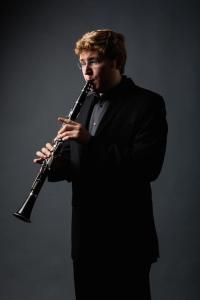
Oct. 16, 17, 18, 2015: Scottish Fantasy
John DeMain, Conductor, James Ehnes, Violin (below)
JOSEPH HAYDN Symphony No. 85 (La Reine)*
MAX BRUCH Scottish Fantasy*
SERGEI RACHMANINOFF Symphonic Dances
- Nicknamed “La Reine” because it was the favorite of French Queen Marie Antoinette, Haydn’s spirited Symphony No. 85 is one of six symphonies commissioned by the private concert society Les Concerts de la Loge Olympique in Paris.
- Bruch’s Scottish Fantasy for violin and orchestra blends rustic folk tunes and tender themes to convey the stark Scottish landscape. Droning tones imitate bagpipes, while the violins mimic the sound of a country fiddle.
- Written during World War II, Rachmaninoff’s Symphonic Dances features an extended saxophone solo, as well as quotes from Russian Orthodox chant and the Mass of the Dead. The piece was the composer’s final score, and he died believing that it would never be as popular as his earlier music.
Nov. 20, 21, 22, 2015: French Fantastique. John DeMain, Conductor. Sara Sant’Ambrogio, Cello (below bottom)
MAURICE RAVEL Valses Nobles et Sentimentales*
CAMILLE SAINT-SAËNS Cello Concerto No.1*
HECTOR BERLIOZ Symphonie Fantastique
- Inspired by Schubert and originally written for piano, Ravel’s sensuous Valses Nobles et Sentimentales combines the classical simplicity of the waltz with the colorful aural array of the sounds of all the instruments in the orchestra.
- Saint-Saëns eschewed standard concerto form in his Cello Concerto No.1 by interlinking the piece’s three movements into one continuous musical expanse, held together by the rich lyrical power of the cello.
- Meant to depict the haunted hallucinations of an opium trip, Berlioz’s grand and imaginative Symphonie Fantastique is marked by an obsessive return to a striking theme symbolizing Berlioz’s beloved, Shakespearean actress Harriet Smithson, who did not return his affections.
Dec. 4, 5, 6, 2015. A Madison Symphony Christmas. John DeMain (below top), Conductor. Emily Fons, Mezzo-soprano. David Govertsen, Bass-Baritone. Madison Symphony Chorus, Beverly Taylor, Director. Madison Youth Choirs (below middle), Michael Ross, Artistic Director. Mt. Zion Gospel Choir (below bottom), Tamera and Leotha Stanley, Directors.
John DeMain and the Madison Symphony Orchestra don their Santa hats for this signature Christmas celebration. This concert is filled with traditions, from caroling in the lobby with the Madison Symphony Chorus to vocal performances by hundreds of members of Madison’s musical community. Christmas classics are interwoven with enchanting new holiday music. The culminating sing-along is Madison’s unofficial start of the holiday season!
Feb. 12, 13, 14, 2016: Music, the food of love…
Daniel Hege, Guest Conductor (below top). Alina Ibragimova, Violin (below bottom)
PETER ILYICH TCHAIKOVSKY “Romeo and Juliet” Fantasy Overture
MAURICE RAVEL “Daphnis and Chloe” Suite No. 2
LUDWIG VAN BEETHOVEN Violin Concerto
Tchaikovsky’s Romeo and Juliet Fantasy Overture tells the story of Shakespeare’s star-crossed lovers through thunderous passages portraying the conflict between the Montagues and the Capulets and a rapturous love theme.
- With music from a ballet premiered by the Ballet Russes in Paris in 1912, Ravel’s lush Daphnis and Chloe Suite No. 2 depicts lovers Daphnis and Chloe reuniting at daybreak, followed by a Bacchanalian dance.
- Beethoven’s technically challenging Violin Concerto premiered in 1806. The composer’s only violin concerto, this work paved the way for the great 19th-century German violin concertos by Mendelssohn, Bruch, and Brahms.
Mar. 11, 12, 13, 2016. John DeMain, Conductor. Emanuel Ax (below top), Piano. Alisa Jordheim, Soprano (below bottom)
DMITRY KABALEVSKY Colas Breugnon Overture*
CÉSAR FRANCK Symphonic Variations*
RICHARD STRAUSS Burleske
GUSTAV MAHLER Symphony No. 4
- Composed in 1938 in Russia, Dmitry Kabalevsky’s dynamic Colas Breugnon Overture preceded the opera glorifying a working man’s struggle against a corrupt aristocracy—an unsurprising theme in the time of Stalin.
- Knit together by themes presented in the introduction, Franck’s tightly polished Symphonic Variations for piano and orchestra became better known after his death due to the efforts of the composer’s adoring students.
- Richard Strauss wrote his showy and seductive Burleske for piano and orchestra at the age of 21. When the composer presented it as a thank-you gift to his mentor, Hans von Bülow, the prominent conductor and pianist pronounced the work “unplayable”!
- Sometimes referred to as Mahler’s pastoral symphony, Mahler’s Symphony No. 4 is light, sunny, and childlike. The finale features a soprano singing a text based on folk poetry.
Apr. 1, 2, 3, 2016. John DeMain, Conductor. Garrick Ohlsson, Piano (below)
STEVEN STUCKY Symphony No. 1*
RICHARD STRAUSS Don Juan
JOHANNES BRAHMS Piano Concerto No. 1
- Described by the composer as “a single expanse of music that travels through a series of emotional landscapes”, Steven Stucky’s Symphony No. 1 is one of the Pulitzer Prize-winning composer’s most recent works.
- Richard Strauss’ tone poem Don Juan recounts the life, and death, of the eponymous fictional character through brazenly virtuosic flair matched by tender romantic melodies.
- Brahms’ first major orchestral work, Piano Concerto No. 1, casts the piano and orchestra as equal partners working together to develop musical ideas. Written in D minor, this piece captures the composer’s grief over his friend Robert Schumann’s breakdown and eventual death in a mental asylum.
Apr. 29, 30, May 1, 2016. John DeMain, Conductor. Jeni Houser, Soprano. Thomas Leighton, Tenor. Keith Phares, Baritone. Madison Symphony Chorus (below), Beverly Taylor, Director.
OTTORINO RESPIGHI Pines of Rome
CARL ORFF Carmina Burana
Respighi’s moving tone poem Pines of Rome illustrates four distinct scenes through music, and features one of the most stunningly beautiful melodies of the classical repertoire.
- The epitome of “epic” music, Carl Orff’s spellbinding cantata Carmina Burana unites chorus and orchestra with rhythmic velocity and evocative lyrics. John DeMain calls it a “soul-stirring experience you’ll never forget” and “one of classical music’s most popular treasures.”
The Madison Symphony Orchestra starts its 90th season with the 2015-16 concerts. The MSO engages audiences of all ages and backgrounds in live classical music through a full season of concerts with established and emerging soloists of international renown, an organ series that includes free concerts, and widely respected education and community engagement programs. Find more information at www.madisonsymphony.org.
Tags: Alina Ibragimova, Antonín Dvořák, Arts, ballet, Ballets Russes, bass-baritone, Beethoven, Benny Goodman, Brahms, brass, Bruch, Cantata, Carl Orff, Carmina Burana, Cello, choral music, Christmas, clarinet, Classical music, concerto, conductor, Copland, Don JUan, Emanuel Ax, folk, Franck, gospel, Haydn, Hyadn, Jacob Stockinger, James Ehnes, Jazz, Johannes Brahms, John DeMain, Kabalevsky, Ludwig van Beethoven, Madison Opera, Madison Symphony Orchestra, Madison Youth Choirs, Mahler, Marie-Antoinette, Mendelssohn, Mezzo-soprano, Mt. Zion Gospel Choir, Music, Music director, Orchestra, Ottorino Respighi, Overture Center, Paris, Piano, Piano concerto, Pines of Rome, Poetry, Rachmaninoff, Ravel, Richard Strauss, Romeo and Juliet, Russian Orthodox Church, Saint-Saens, Sara Sant'Ambrogio, sing-along, soloist, soprano, Steven Stucky, Symphonie Fantastique, symphony, Tchaikovsky, tenor, tone poem, Valentine's Day, Valses nobles et sentimentales, variations, Violin, Violin concerto, vocal music, Wisconsin, World War II, youth choir
Classical music: The Wisconsin Baroque Ensemble offers early music rarities with verve and polish. Plus, TONIGHT at 7:30 p.m. native daughter violist Vicki Powell solos with the Middleton Community Orchestra
Leave a Comment
ALERT: A reminder that Madison-born Vicki Powell, who trained at the UW-Madison School of Music, the Curtis Institute and the Juilliard School and who plays with the New York Philharmonic and other major groups, will perform two solos TONIGHT at 7:30 p.m. at the season-opening concert by the largely amateur but very good Middleton Community Orchestra, under conductor Steve Kurr.
The place is the Middleton Performing Arts Center that is attached to Middleton High School, 2100 Bristol Street, not far off of University Avenue.
On the programs is the Overture to “William Tell” by Rossini, the Fantasy for Viola and Orchestra by Johann Nepomuk Hummel, the Romance for Viola and Orchestra by Max Bruch and the Symphony No. 8 by Antonin Dvorak. Tickets are $10; all students get in for FREE. A meet-and-greet reception for the players and audience members follows the concert.
Here is a link to the Q&A with violist Vicki Powell that The Ear posted last week:
By Jacob Stockinger
Here is a special posting, a review written by frequent guest critic and writer for this blog, John W. Barker. Barker (below) is an emeritus professor of Medieval history at the University of Wisconsin-Madison. He also is a well-known classical music critic who writes for Isthmus and the American Record Guide, and who for 20 years hosted an early music show every other Sunday morning on WORT FM 89.9 FM. He serves on the Board of Advisors for the Madison Early Music Festival and frequently gives pre-concert lectures in Madison.
By John W. Barker
The Wisconsin Baroque Ensemble (below top) launched its new season in Madison last Sunday afternoon, not at its usual venue (Gates of Heaven Synagogue), but at St. Andrew’s Episcopal Church (below bottom).
The different location contributed to an enlargement of instrumental colors this time. Max Yount not only worked the harpsichord, but made good use of the church’s handsome Baroque organ in the numerous continuo functions.
In addition, Eric Miller (below) extended from his viola da gamba to show his new talents on the cornetto, while Theresa Koenig moved gracefully between dulcian (early bassoon) and recorders, and Monica Steger alternated on flute and recorder.
The frequent vocal collaborators, UW-Madison soprano Mimmi Fulmer (below top, seen at the Hillside Theater at Frank Lloyd Wright’s compound Taliesin in Spring Green) and mezzo-soprano Consuelo Sañudo were on hand, and patriarch Anton TenWolde (below bottom) on cello completed the group of seven performers.
Two of the nine composers represented — the German Johann Sebastian Bach (1685-1750) and the Swede Johan Helmich Roman (1694-1758) — stood apart as almost chronological afterthoughts, though Roman’s sonata for flute and continuo was given a predictably rousing rendition by Steger.
Otherwise, the focus was on music of the 17th century, especially its very early epoch. Miller gave us gamba renditions of Giovanni Bassano’s variations on a popular madrigal by Cipriano de Rore (1515-1565), two training pieces by Christopher Simpson (1602-1669), and an unaccompanied solo by the enigmatic Sainte-Colombe (1640-1700). (An entrancing sample of solo viol music by Sainte-Colombe is in a popular YouTube video at the bottom.)
Koenig presented a sonata for dulcian and continuo by Giovanni Antonio Bertoli (1598-1645), then joining Steger on recorders for a duo sonata by Giuseppe Scarani of the mid-17th century.
On the vocal side, the two singers joined in an impressive cycle of eight Italian duets, with continuo, by Sigismondo d’India (1582-1629). In these, D’India, an epigone of Claudio Monteverdi (below), contrived writing of individual elaborateness for each singer while also ingeniously integrating their parts.
Vocal music returned at the end, too, when Sañudo, joined by all the players, sang the opening aria of Bach’s Cantata 161, and then the two singers and almost all the players came together for an early carryover by Heinrich Schütz (below, 1585-1672) from his Italian training, a moralizing madrigal in German for two voices, two melody instruments, and continuo, which made a richly satisfying conclusion to the program. It was in these two last vocal works, too, that Miller forsook his gamba and took up his cornet.
What can we say? After some 17 years, the WBE is still going strong, offering us annual presentations of mostly rare Baroque chamber works, in elegant performances in intimate venues. They are the trailblazers in Madison’s early music scene, and they remain a vital component of that scene.
Tags: American Record Guide, Antonín Dvořák, Arts, Bach, Baroque, Bruch, Cantata, Cello, Chamber music, Christopher Simpson, Classical music, Claudio Monteverdi, Curtis Institute of Music, Dvorak, Early music, Gates of Heaven Synagogue, Giovanni Bassano, Hummel, Jacob Stockinger, Johann Nepomuk Hummel, Johann Sebastian Bach, John W. Barker, Juilliard School, Madison, Middleton Community Orchestra, Middleton High School, New York Philharmonic, Rossini, Singing, Sunday, University of Wisconsin-Madison School of Music, University of Wisconsin–Madison, Viola, Violin, vocal music, William Tell, Wisconsin, Wisconsin Baroque Ensemble
- June 2024
- May 2024
- April 2024
- March 2024
- February 2024
- January 2024
- December 2023
- November 2023
- October 2023
- September 2023
- August 2023
- July 2023
- June 2023
- May 2023
- April 2023
- March 2023
- February 2023
- January 2023
- December 2022
- October 2022
- September 2022
- June 2022
- May 2022
- April 2022
- March 2022
- July 2021
- June 2021
- May 2021
- April 2021
- March 2021
- February 2021
- January 2021
- December 2020
- November 2020
- October 2020
- September 2020
- August 2020
- July 2020
- June 2020
- May 2020
- April 2020
- March 2020
- February 2020
- January 2020
- December 2019
- November 2019
- October 2019
- September 2019
- August 2019
- July 2019
- June 2019
- May 2019
- April 2019
- March 2019
- February 2019
- January 2019
- December 2018
- November 2018
- October 2018
- September 2018
- August 2018
- July 2018
- June 2018
- May 2018
- April 2018
- March 2018
- February 2018
- January 2018
- December 2017
- November 2017
- October 2017
- September 2017
- August 2017
- July 2017
- June 2017
- May 2017
- April 2017
- March 2017
- February 2017
- January 2017
- December 2016
- November 2016
- October 2016
- September 2016
- August 2016
- July 2016
- June 2016
- May 2016
- April 2016
- March 2016
- February 2016
- January 2016
- December 2015
- November 2015
- October 2015
- September 2015
- August 2015
- July 2015
- June 2015
- May 2015
- April 2015
- March 2015
- February 2015
- January 2015
- December 2014
- November 2014
- October 2014
- September 2014
- August 2014
- July 2014
- June 2014
- May 2014
- April 2014
- March 2014
- February 2014
- January 2014
- December 2013
- November 2013
- October 2013
- September 2013
- August 2013
- July 2013
- June 2013
- May 2013
- April 2013
- March 2013
- February 2013
- January 2013
- December 2012
- November 2012
- October 2012
- September 2012
- August 2012
- July 2012
- June 2012
- May 2012
- April 2012
- March 2012
- February 2012
- January 2012
- December 2011
- November 2011
- October 2011
- September 2011
- August 2011
- July 2011
- June 2011
- May 2011
- April 2011
- March 2011
- February 2011
- January 2011
- December 2010
- November 2010
- October 2010
- September 2010
- August 2010
- July 2010
- June 2010
- May 2010
- April 2010
- March 2010
- February 2010
- January 2010
- December 2009
- November 2009
- October 2009
- September 2009
- August 2009
Archives
- 2,495,315 hits
Blog Stats
Recent Comments
Tags
#BlogPost #BlogPosting #ChamberMusic #FacebookPost #FacebookPosting #MeadWitterSchoolofMusic #TheEar #UniversityofWisconsin-Madison #YouTubevideo Arts audience Bach Baroque Beethoven blog Cello Chamber music choral music Classical music Compact Disc composer Concert concerto conductor Early music Facebook forward Franz Schubert George Frideric Handel Jacob Stockinger Johannes Brahms Johann Sebastian Bach John DeMain like link Ludwig van Beethoven Madison Madison Opera Madison Symphony Orchestra Mead Witter School of Music Mozart Music New Music New York City NPR opera Orchestra Overture Center performer Pianist Piano post posting program share singer Sonata song soprano String quartet Student symphony tag The Ear United States University of Wisconsin-Madison School of Music University of Wisconsin–Madison Viola Violin vocal music Wisconsin Wisconsin Chamber Orchestra wisconsin public radio Wolfgang Amadeus Mozart YouTube